Photo Story: Exploring Ladakh In High Altitude Roaming
Words: Cédric Tassan
Photos: Cedric Tassan, Skaldan, Achukcq
A trip to the remote region of Ladakh in northern India, taking in some of the highest mountain passes, might seem to most to be challenge enough. But for Cédric Tassan he wanted something more and decided he could think of no better way to explore the region other than by bike. In his own words, this is his incredible journey.
For almost two years now, I have been planning this adventure. The destination nestled in northern India with borders to China and Pakistan is Ladakh, a territory at high altitude belonging to the Himalayan range. In a testing crossing through the mountains, it’s my desire to meet the inhabitants and bear witness to the very rapid development of the area that is upsetting the traditions and customs of the local population.
The closer the deadline approaches, the more my sense of dread grows. I need to stick to the trails as much as possible and some of the numbers I am looking at scare me. 5,260, 4,600, 4,900 meters, these are the dizzying altitudes of the passes that I have to cross with my bike and my kit.
And to further complicate things, in addition to photos, I want to bring back video in order to make a documentary on the evolution of the territory as it adapts to the arrival of modernism and everything that brings with it.
Suffice to say that the video equipment weighs me down. Without this, I would be so light. But I have to question myself, would it be as interesting to make this trip without bringing back testimony? Of course, I could have just reported on my experience of cycling through the region, but this vision is too narrow for me and would be unjust to the thousand voices of Ladakh and what they have to say.
Because here, history is rooted in millennia. Man has always occupied this land, so arid in the mountains and so verdant in the valleys. The traditions of the Buddhists feature strongly in this part of Ladakh. Further west, from Kargil, Islam dominates. At first glance things are seemingly peaceful here, even with the two religions in close proximity. But the fact remains that the borders it shares with Pakistan and China are militarised, guarded and often the site of violent conflicts, which take place at unthinkable altitudes. War is never far away here.
There are reminders of this harsh reality from the moment of landing in Leh. The hangars of the fighter planes, hidden in the desert, catch the eye. From the aeroplane window, it is impossible to miss the huge signs that instruct you that it is forbidden to take photos of the airport. On the drive to nearby Leh town we pass military camps, convoys of vehicles and a memorial dedicated to fallen soldiers.
Leh is the capital of Ladakh. It is a city that is growing very fast, possibly too fast. Leh is teeming with people, especially around the Grand Bazaar: tourists and locals mix. You have to remember that until 1974, Ladakh was closed to foreigners. Since then, it has changed, neighbourhoods sprout up like mushrooms. The city stretches as it can on the mountain. It is suffocated by cars, the traffic not suitable for its narrow streets. Here, they do not hesitate to drive buses where two baby strollers would have trouble to pass each other.
I feel the effects of the lack of oxygen as soon as I arrive in Leh. The altimeter shows 3,500m so it’s important to take time to adjust and relax for the first few days. Using an oximeter, I check my blood oxygen level, it is at 88%. That may seem low, but considering the conditions it is to be expected. I spend my afternoon in slow motion, I admit that I feel like doing nothing.
When I wake up in the morning, I'm cold, I'm tired. It's not going well. I force myself out of bed and on to my bike. I ride at 2km an hour. It takes a while but eventually I adjust to the conditions, and I get better and better. My local contact, Skaldan, responsible for creating India’s first bike park here and a keen mountain biker themselves, comes to pick me up and take me to experience the sights of Leh on foot.
In the afternoon I take my bike and do some photography at Fort Tsemo, the highest point in the city. My schedule is full so unfortunately I can't stay long enough to acclimatise to the altitude properly. The next day I play tourist, visiting the monasteries of the Indus valley. Skaldan is a great help in talking with the locals. I meet a monk at the monastery of Martho who is rather delighted to see the evolution of Ladakh and the arrival of new technologies.
In the evening I sleep in Karu, a garrison town without soul. And yet, I manage to find a pretty cabin facing the Indus, the owners are very helpful. The next day with Skaldan we go up to visit the monastery of Hemis, the richest in the region. We climb to the hermitage of Gotsang, an eagle's nest perched at 4,000m. I take my bike to test it out. Pushing it is not an easy task, but I manage without too much difficulty to swallow the 400m drop.
Up there, a monk comes out, he is amazed. In the 13 years he has lived here, he has never seen someone ride a bicycle here. He is very curious and asks me if I have a channel on YouTube. Despite his familiarity with the trappings of modern life, he finds that things are moving too fast here. We finish our conversation in the monastery kitchen over tea and biscuits.
That evening I sleep in a small village, at the bottom of a deep valley. My place of rest for the night is in a traditional house with a French family, who amazingly, know my aunt and uncle very well. Tomorrow is the big day; I have to climb the highest pass in my adventure. My hosts wish me a lot of luck.
Departure is at dawn and I have a big challenge ahead of me, almost 1,400m of elevation to navigate. In the Alps, that level of elevation would already be a good day but here I’m starting at 3,900m, so it is a huge challenge. And I know it's too early in my adventure, I'm not acclimatised properly yet. Skaldan is there to take pictures, Achuk to use the drone. Fortunately, I can count on them if I fail.
We begin our climb, tracing the route of the river and we are forced to cross it many times. Some passages seem impossibly steep, and I have to carry or push my bike. Skaldan occasionally offers to help. I refuse. He insists. From time to time he wins, and he takes my burden for a while. After the 5,000m mark, the struggle ever upwards begins to take its toll and I am on the edge of tears. The snow begins to fall adding to our woes. I continue pushing my Kern. At the top, at 5160m, I begin to sob, and I don't really know the reason: fatigue, pressure, relief, facing the challenge? Maybe I am crying for them all.
The weather turns against us and we are forced to wait before i can attempt the descent. I am huddled in my poncho and we all take shelter as best we can until finally the wind picks up to drive away the clouds. The relief is palpable, it leaves me and my friends in a state of euphoria.
The descent is exhilarating. I quickly reach the Nimaling camp where I am to pass the night. At 4,850m it is really high, but I feel good. After a good meal, I retreat to one of the tents to sleep off the exhaustion of the day.
Over breakfast I take the time to chat with the leader of the camp, who is very negative on the modernisation of Ladakh and the creation of all these roads that now criss-cross the land. Because of the roads, trekkers are starting to leave the region, they don't want to walk on roads and have to pass cars.
On the other hand, these new roads lead to local, Indian tourism, who do not know the code of the mountains. They just come to take the picture and they leave their trash behind. It’s a calamity for the region that is not equipped to collect and recycle refuse. At this altitude, waste is simply buried or burned.
This morning brings with it rain. I let it pass over and head out under clear skies. The trail is beautiful and its not long before I meet my first hikers near some lakes. Amazingly they are French! They are quite disappointed to have to walk on the road, instead of a trail. I continue my descent and reach the splendid village of Hankar and its ruined fortress. The path widens to allow for cars. At the end of the day, I reach the village of Markha, which lends its name to this valley. My bed for the night in a very nice guest house at the edge of the hamlet. After a wearying day, it is gladdening that the hospitality and the food are excellent. I take my first (pan) shower since I left.
The next day the trail is wiped out by a road. Several vehicles pass me, including a taxi from which is thrown a bottle of soda. It lands at the roadside, spoiling the environment with its presence. Luckily, I manage to catch him and return to him the precious packaging that he had just misplaced, making him understand that he should never do that again.
I continue my long descent, cross the furious Zanskar and climb to the small Chiling village. I spend the night in the highest house in the village. A charming couple welcome me. My host shows me around, opening the monastery to me, showing me her parents' old house and tells me which path I should take tomorrow. At the top of the village, on stone slabs, at contrast to its surroundings is a brand new 4G antenna. Despite his young age, my other host is very proud of his culture’s traditions. This village is very old. Formerly the king of the region had brought blacksmiths from Nepal to create utensils. The tradition continues and my host is studying metalwork.
At dawn, I climb the path indicated to me the night before. The path was created last year. A jewel. I really regret not recording it on the way down. The slope is regular, perfect. I come to the end of the pass. My GPS Cross from TwoNav displays 4,600m. On the other side is the great unknown: no road, no network, only one hamlet to welcome and supply me!
I attack the fairly steep descent, it's exhilarating. At 4,100m, I take a break to catch my breath beside some trees next to a stream. Here, the rain catches up with me and I take refuge under my poncho once again.
Once the bad weather has passed, I descend the second part of the trail, a pure mountain trail. But when I arrive in the valley, my day is not over. I have another four kilometers of climbing to do before I will arrive in the hamlet of Sumda Chemno, a small place, cut off from the world. The nearest road is hours away. The scenery is imposing, the valley deep and narrow and I take a moment to admire it.
This far away from it all, I thought I would find the most genuine welcome. But it is not to be, the smile is certainly there, but the desire to share is long gone. It feels like a shame because here is the Ladakh of several centuries ago. From the look of the houses to the traditional way of doing things, everything here harks back to a time gone by.
I arise and leave very early. A new pass awaits me and this one scares me. After hours in the mountains, I reach the tipping point at 4,900m. A terrible wind pushes me on the descent. I come across trekkers who are astounded to see a bike all the way up here. Down in a passage, trapped like a rat, I come across a herd of yaks. All round me, in every direction are the sounds of the grunts and murmurings of the beast. I try to make myself small and creep through. I am nearly free when I find myself face-to-face with a monster! The king of the herd which makes the other yaks look like marmots. I go around it slowly on foot, then I put as much distance between him and me as possible.
After my race away from the King of the Yaks, I reach the village of Hinju and its asphalt road. Here the inhabitants are happy to have this tarmac snake at their door. I stop to talk with a Nepalese road worker. I learn that they want to widen it to six meters to accommodate buses and trucks. This feels like a sacrilege. For it to reach out to small villages like this one, some of which lack the basic necessities of water due to climate change.
The evening is spent in the company of Tandzing, a young man who is finishing university and who lives with his parents. He is full of ideas and energy. He wants to develop eco-tourism here. He finds old paths to avoid the roads and wants to bring trekking back to the valley. He lives in front of the road which has just been completed. Now it takes just a day to travel to Padum in Zanskar.
Tomorrow, I have to cross my last pass to reach Lamayaru. I think it should be a pretty fast climb as it is only at 3,700m! The weather is cloudy, perfect. I go up a canyon and there is no trail. The slope is gentle, but it does not last. Climbing passages have to be crossed by bike. It is quite the challenge. The more I climb, the more I convince myself that I am going to find an impassable bit and I will be stuck. The sun comes out to spice up the game. It feels like an oven. Finally, I reach the rocky breach and the welcoming sight of the prayer flags.
On the other side, a new canyon awaits me. Here I am able to refill my water supply from the source as the water springs up from the ground. A gift from heaven. At the exit, after a long break under the trees, I climb up to the village of Lamayaru and its ancient monastery. I visit the temples, my bike is kept at the entrance by the monk in charge of the tickets. He makes me understand that here there is no risk. Who would dare a bad reincarnation?
In the morning, I try to attend a religious ceremony. With the adults, no puja. But the children are already all together to pray. I follow the noise and enter a room where an adult is supervising the ceremony. After an hour they all fly away like sparrows to go to the refectory to have breakfast. I join them and the adults, then hit the road.
My destination for the day is the village of Tar. I arrive via a beautiful trail that follows a narrow canyon. A scattering of 20 buildings makes up the village. The house furthest upstream welcomes me for the night. I have a bedroom with a gorgeous view of the mountain and the heavily laden apricot tree.
In the evening I talk with my host, she waits impatiently for the road. Yet the government has built it at a new village in another sector, but she does not want to move. She doesn't seem to understand the sign that the road will probably never be done. That the route here is so narrow that it would be very expensive, therefore almost impossible to build a road for so few inhabitants. I feel sorry for her, but her village is so beautiful just like it is.
Transition day and I want to rest. I have a car to take me the 50 kilometers away I need to go. I am also fleeing the deadly roads in India, especially for bikes. Of course, before joining my driver I take advantage of the magnificent descent from the village of Tar. In the car I sleep. The driver wakes me up, we are in Likir, starting point of a well-known trek in the region. I wanted to finish my trip here because from my research it seems like this place, while easily accessible, is still very well preserved.
So, I go across fields on tracks then through Tar itself. At the first pass, I follow the trekking path and am horrified to discover that it has been destroyed by machines to allow a pipe to pass. I recover the road, reach a second pass. There too, the path is gutted. The mule path further on, which went back to a small village, is transformed into a hideous track. From then on, I stay on the tarmac. It's unbelievably hot, I'm dragging my loaded enduro like a mule. I want to go home. I pull myself up to one last pass.
A very nice but too-short path takes me to the village of Hemis Shukpachan. I decide to look for a house for the night. By taking my time I make a good choice. By pushing the door of Diskit and Dorjay, I understand very quickly that I just found what I was looking for in Ladakh: incredible human warmth and desire to preserve its traditions.
I am caught up in local life. The barley, the centuries-old watermill, the 40 kilograms of tsampa in my backpack, the joy of eating this traditional flour-based meal, a rustic and quality life where every gesture counts, the last 80-year-old nun who lives alone in her dilapidated convent, captivates me. And yet the electricity is there, the road too. But this village becomes for me like the model of what Ladakh should be in its quest for progress.
For once, I want to stay. I'm good here and decide to enjoy this haven of peace a little longer.
Acknowledgments:
Thanks to Michael from Mountainbikekerala.com for telling me about this amazing destination.
Michael organises mountain bike trips in Ladakh.
Skaldan lives in Leh, he is a seasoned practitioner and heavily involved in the MTB community in the Disco Valley, just behind Leh. He established the first bike park in India. Also, he will guide you through the mountains. On Insta: unexploredladakh
Warnings:
Because of the altitude, the very harsh climate (very hot during the day and very cold at night), the
Ladakh is not a destination to be taken lightly. You must arrive trained and with the proper equipment. You won't find any spare parts, so you need to be prepared. Finally, one last thing to consider is the altitude, as it can be a real problem. Everyone’s bodies are built differently and will react to altitude in their own way. If after 24 hours, your condition worsens, do not wait, ask to be put under oxygen. A warned rider is a prepared rider!
www.vtopo.fr
www.sunn.fr
www.dtswiss.com
www.met-helmets.com (MET Helmets & Bluegrass)
www.julbo.com/
cycling.hutchinson.com
https://7mesh.com
www.authentic-bicycle-shop.com
www.altura.fr
www.mulebar.com
www.powertec.fr
www.twonav.com
Author Info:
Must Read This Week
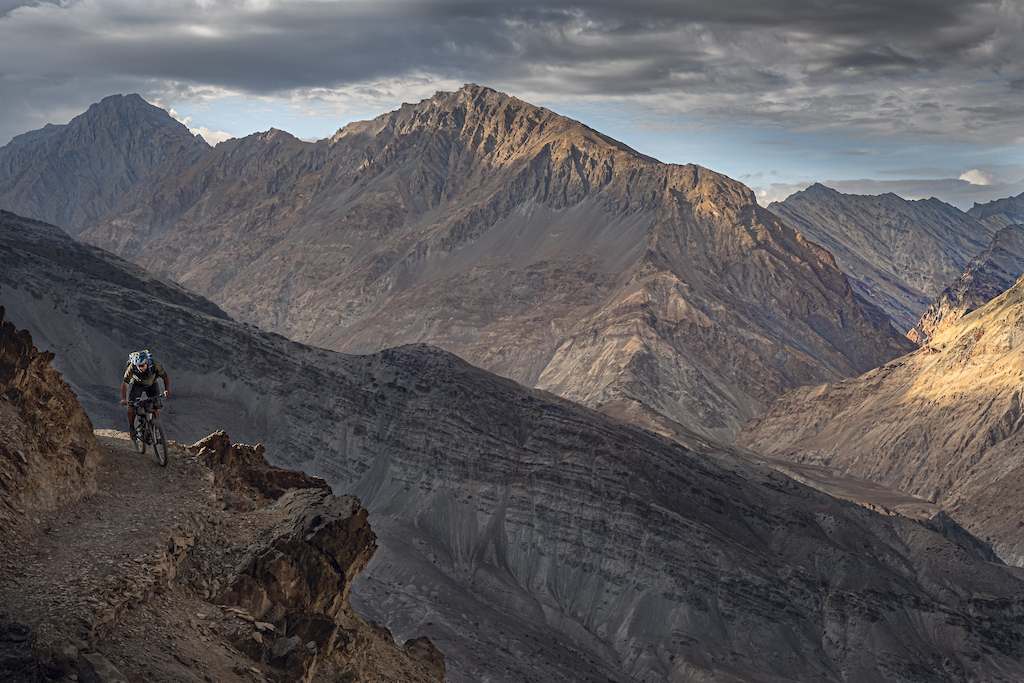


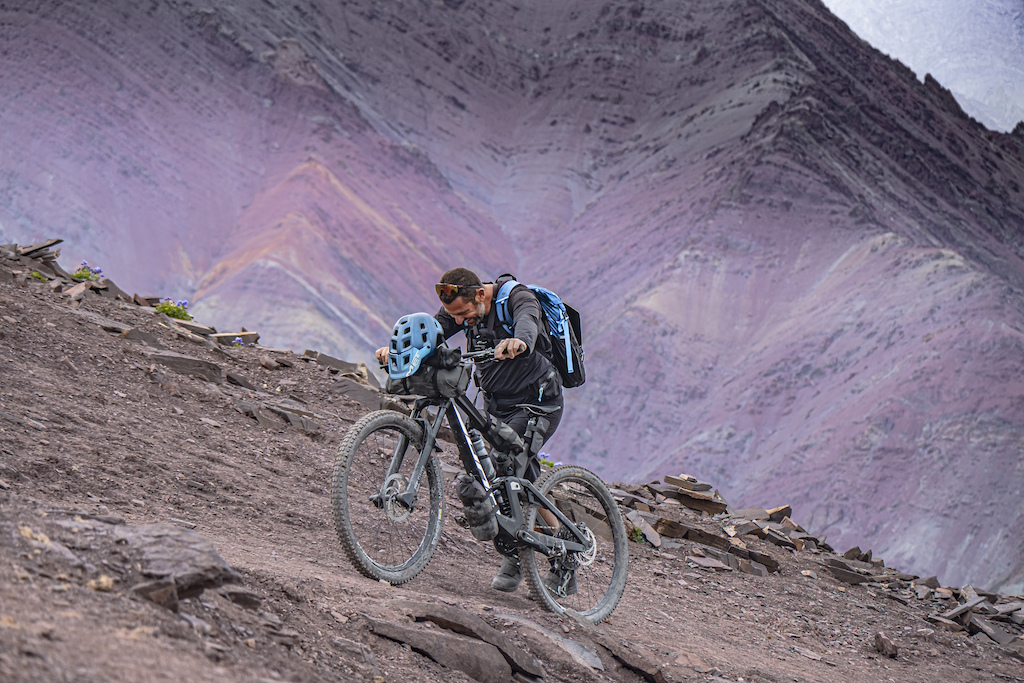
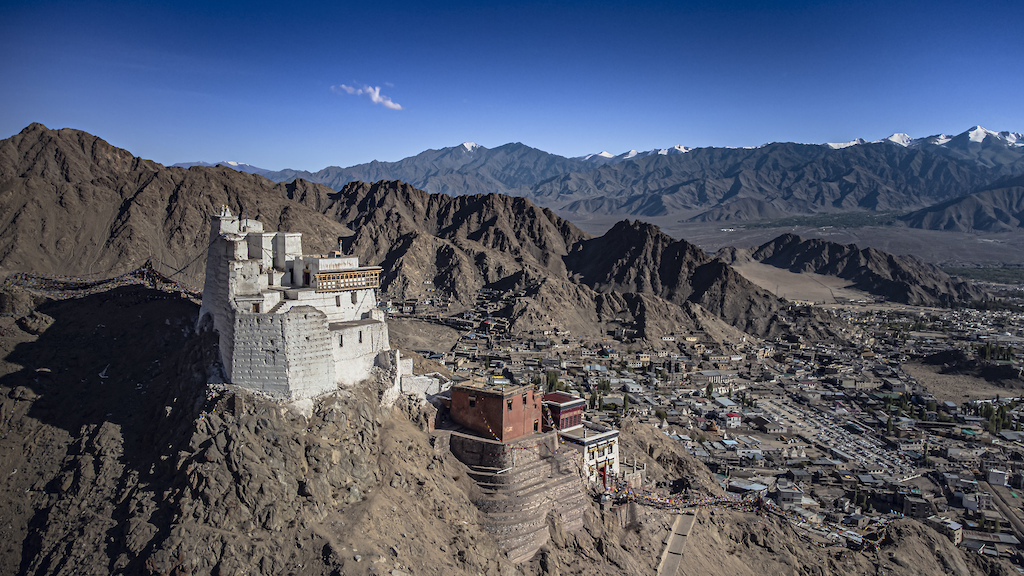
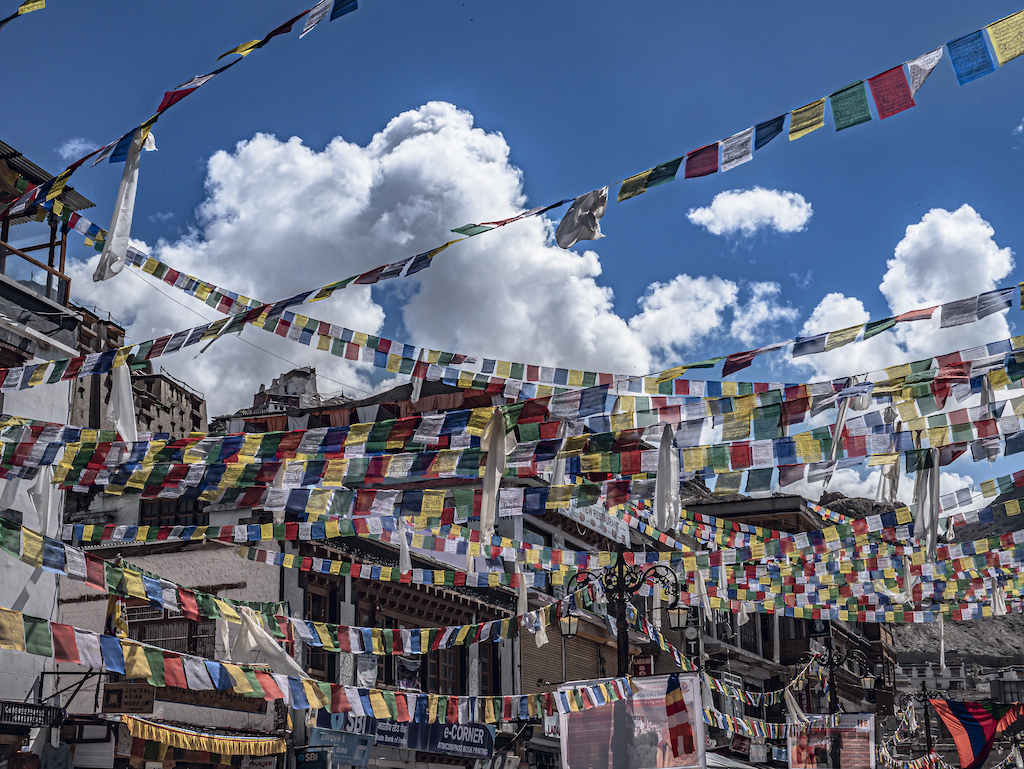
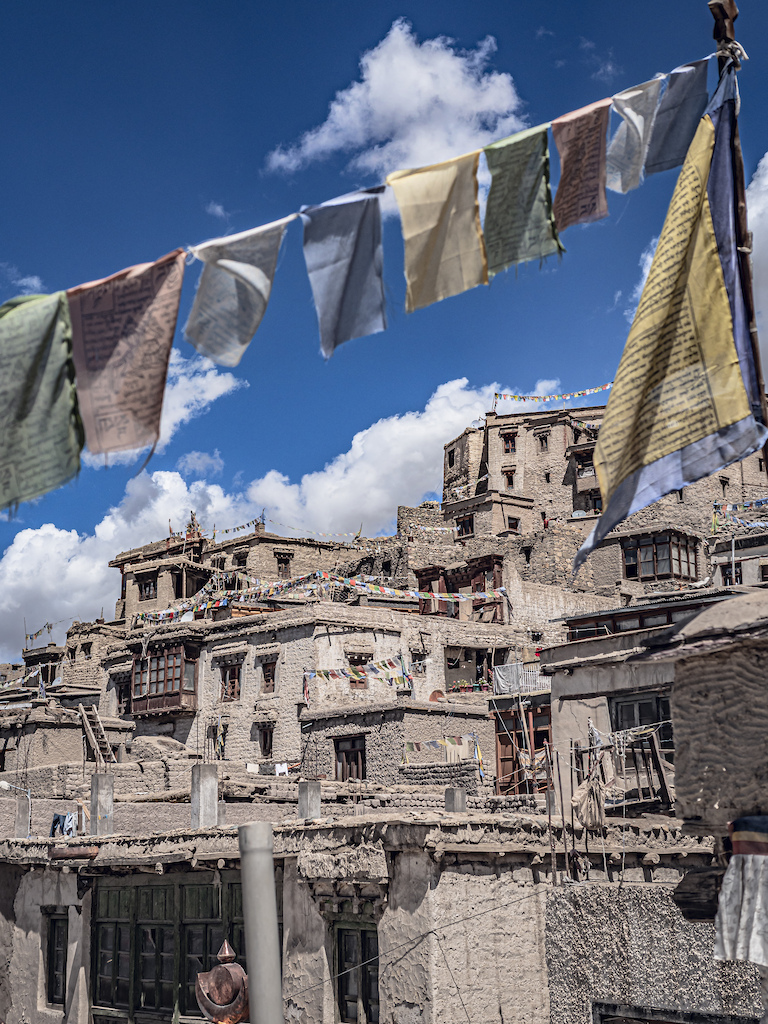
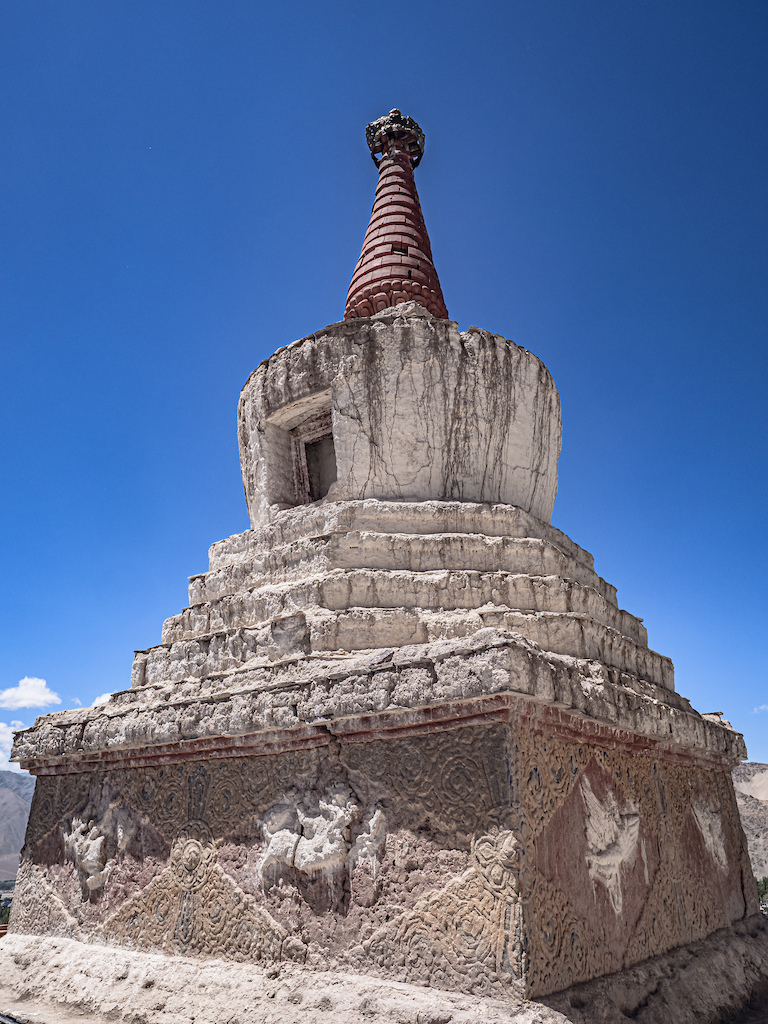
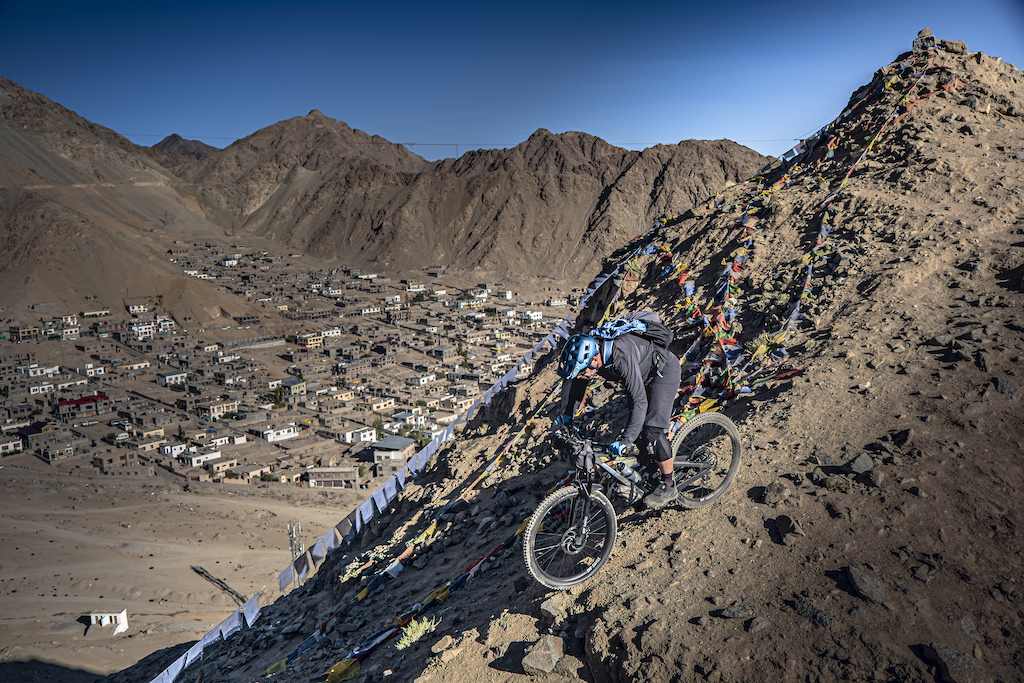
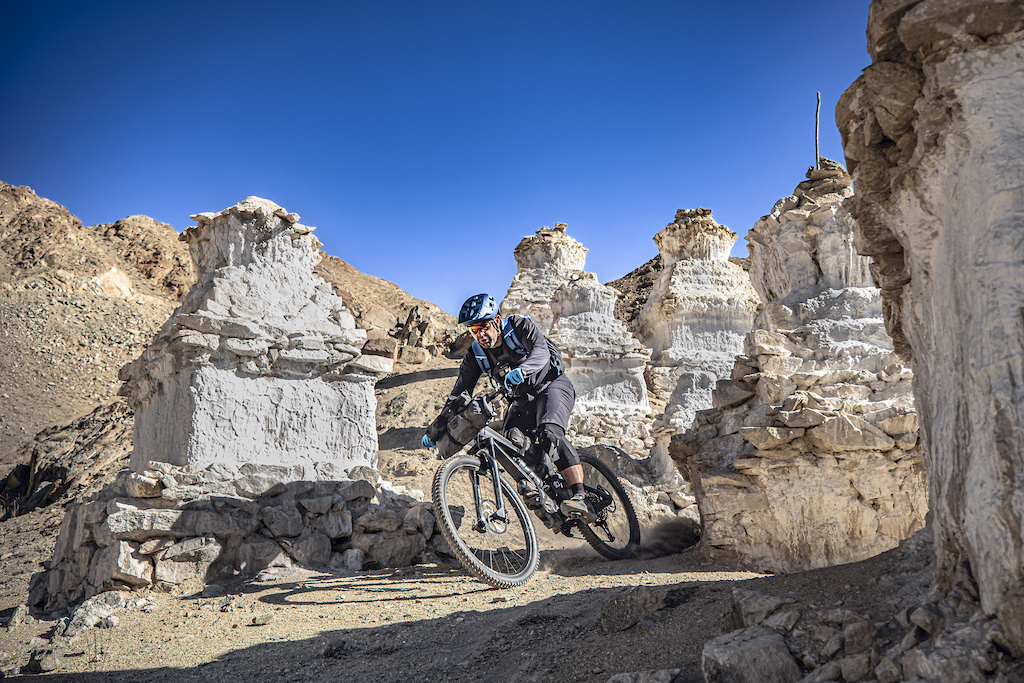
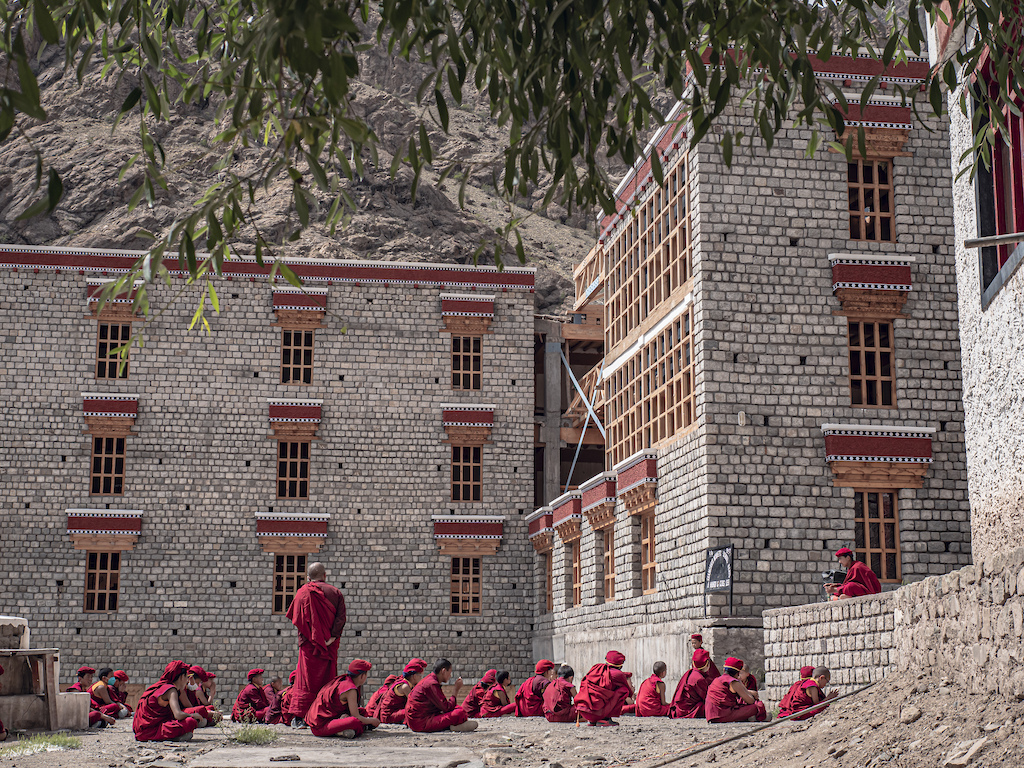
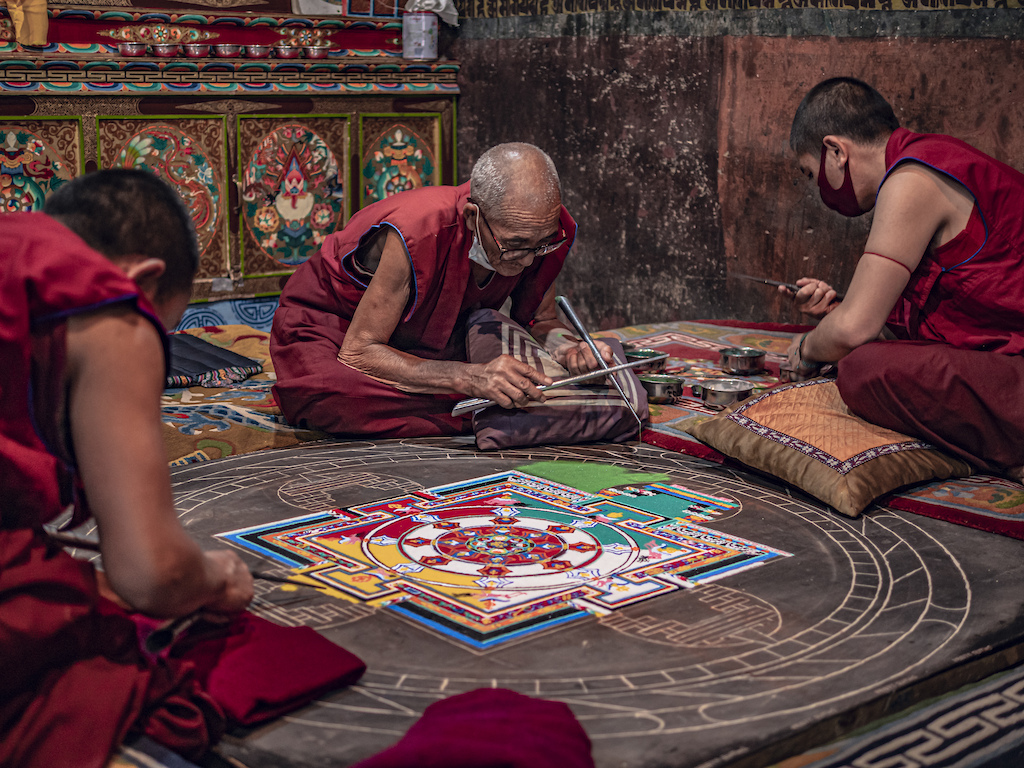
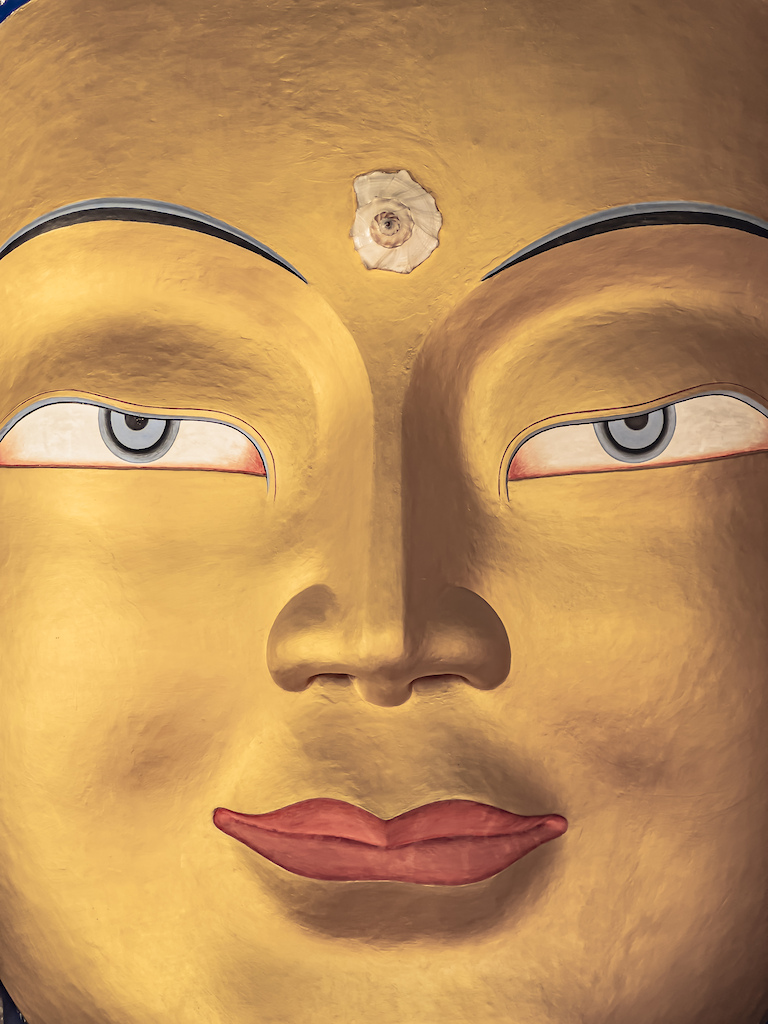
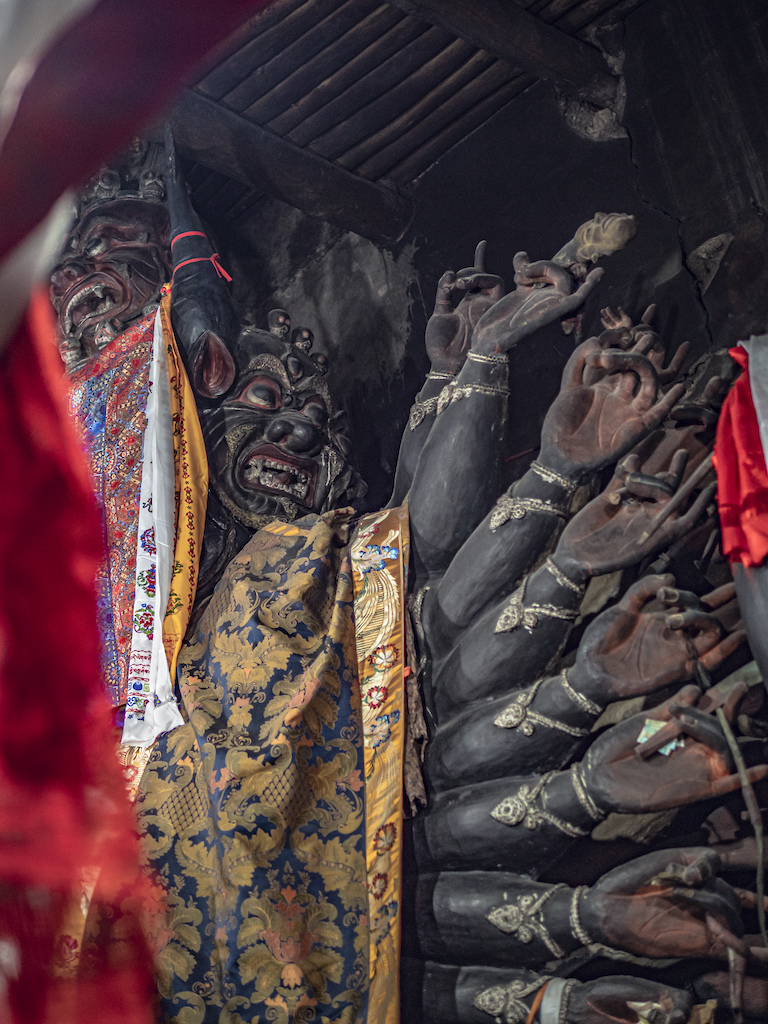
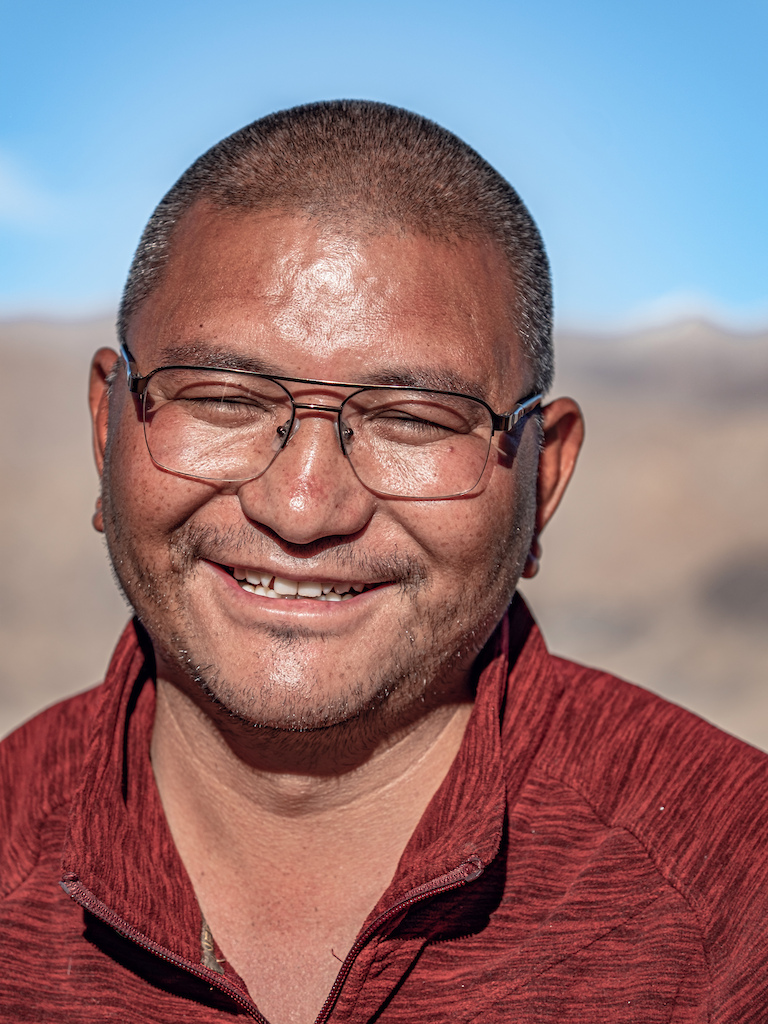




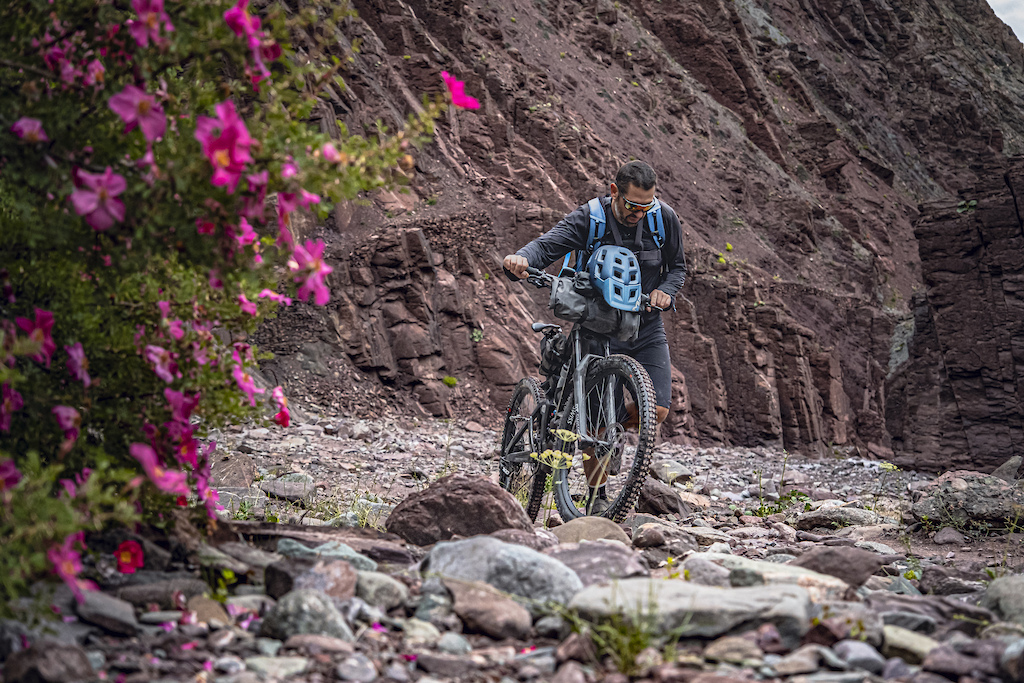
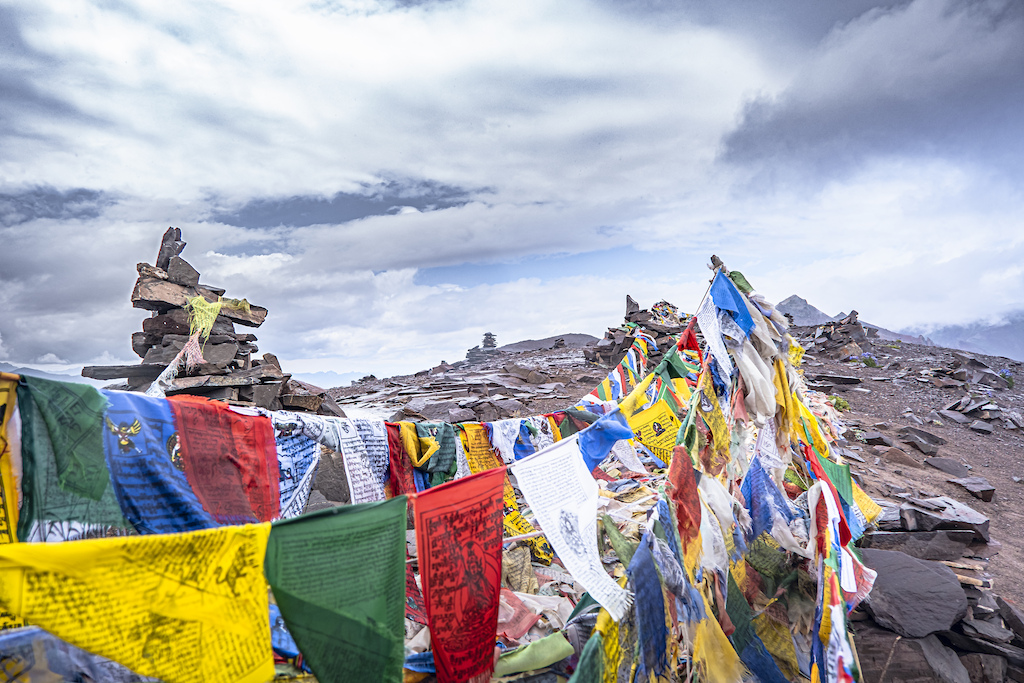
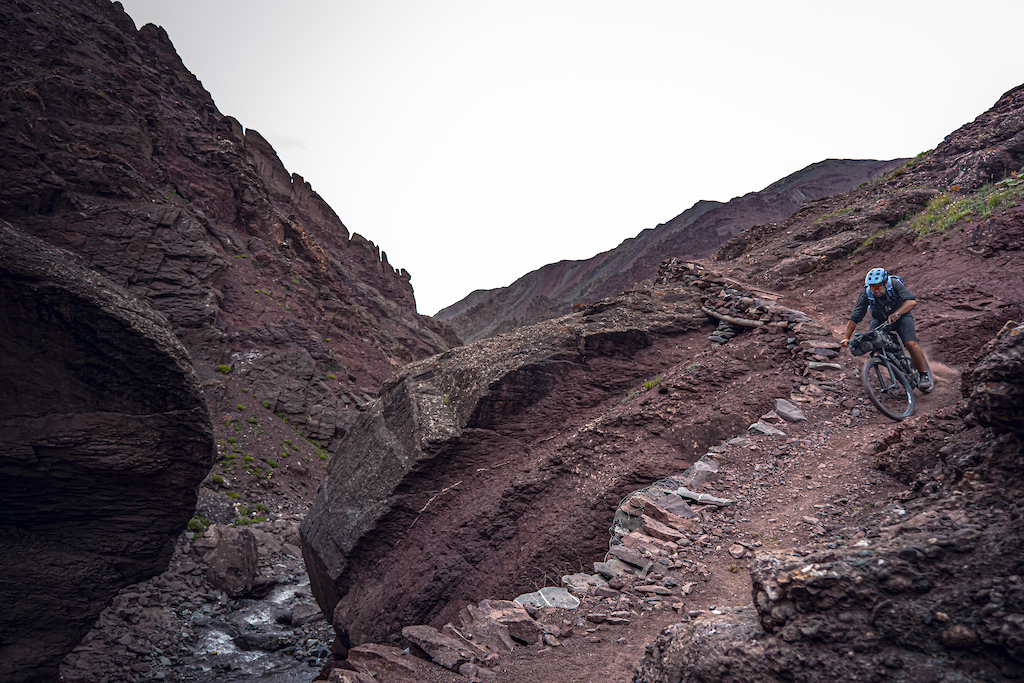
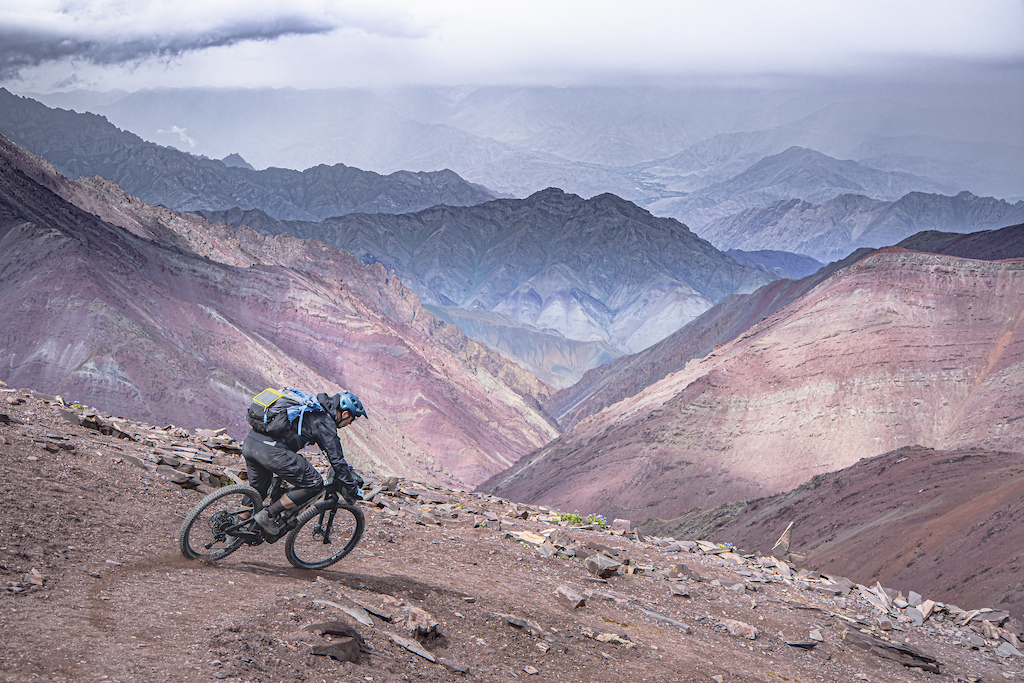

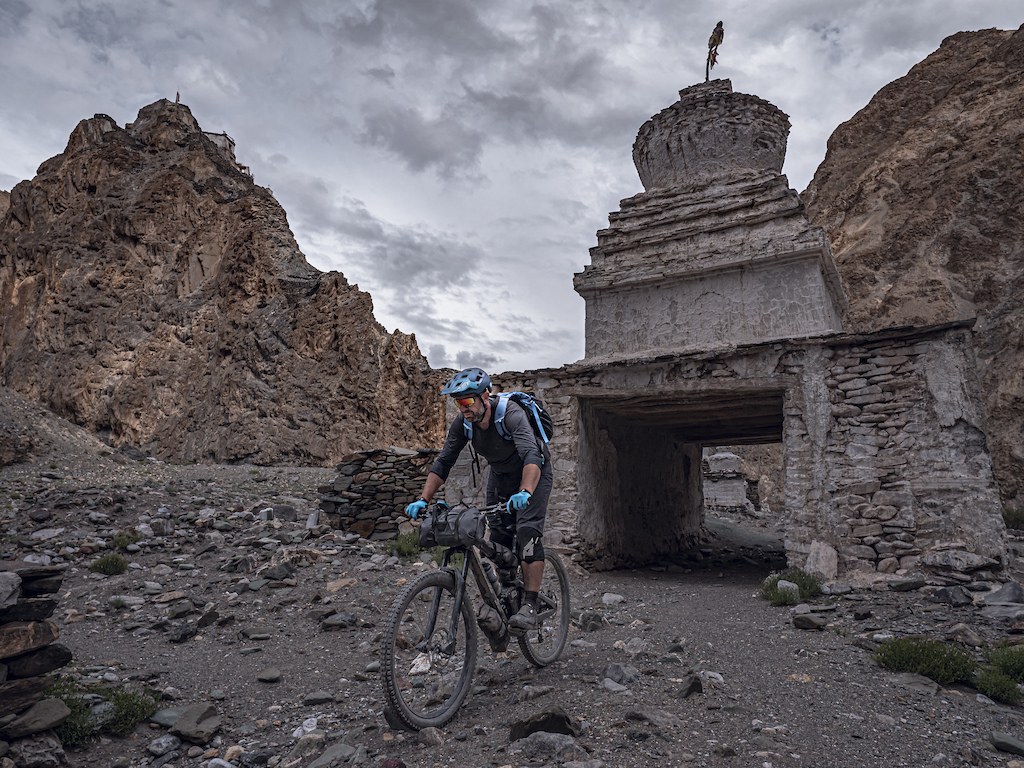
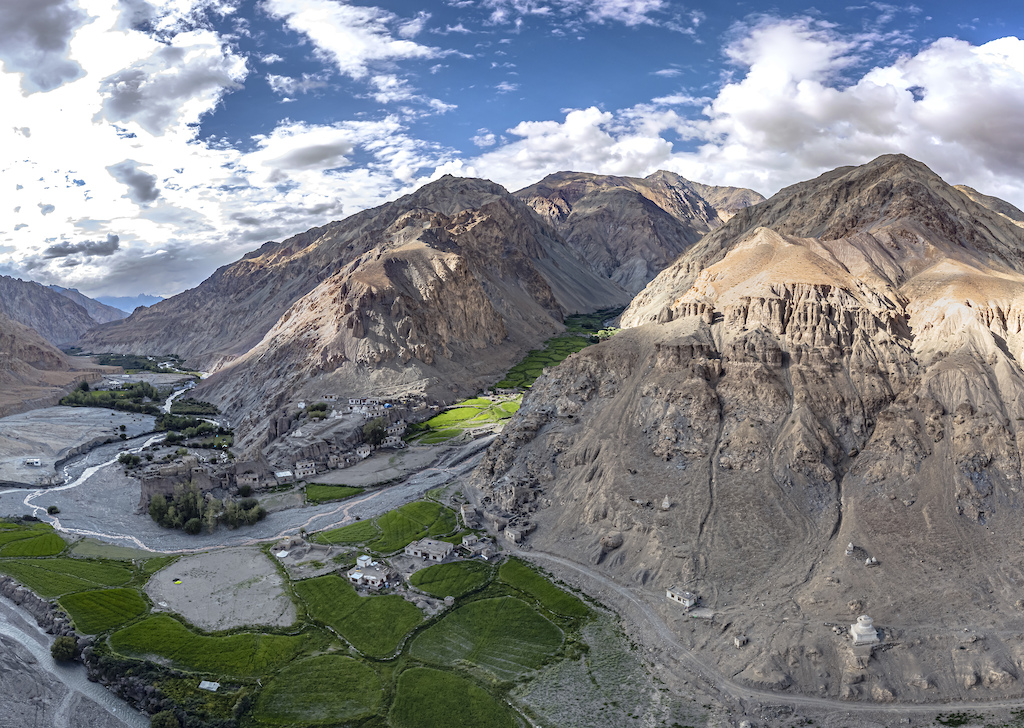
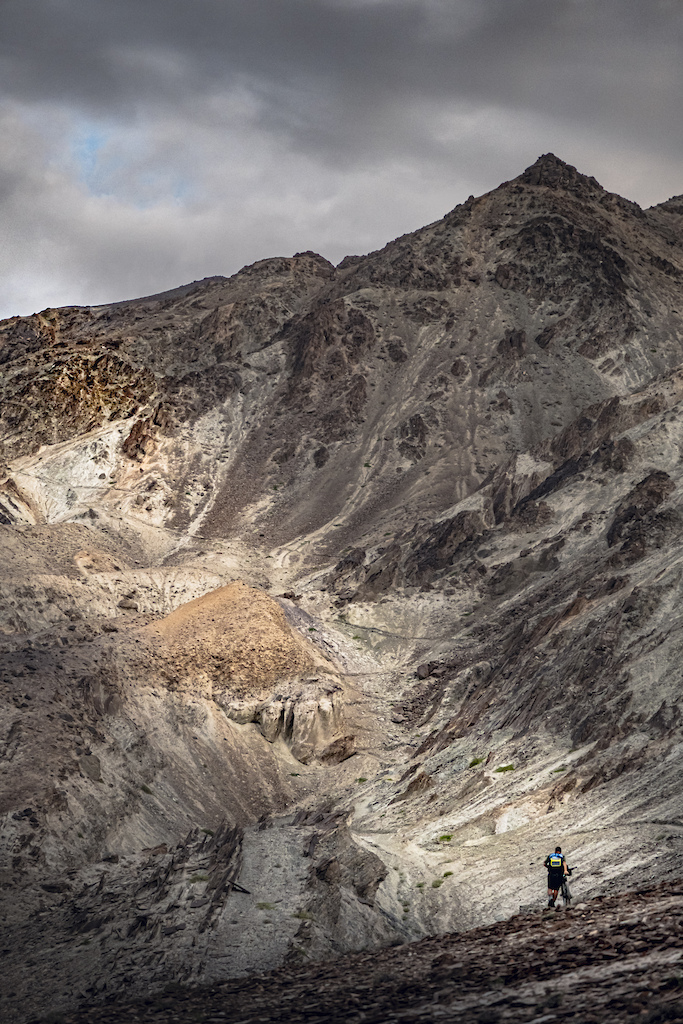
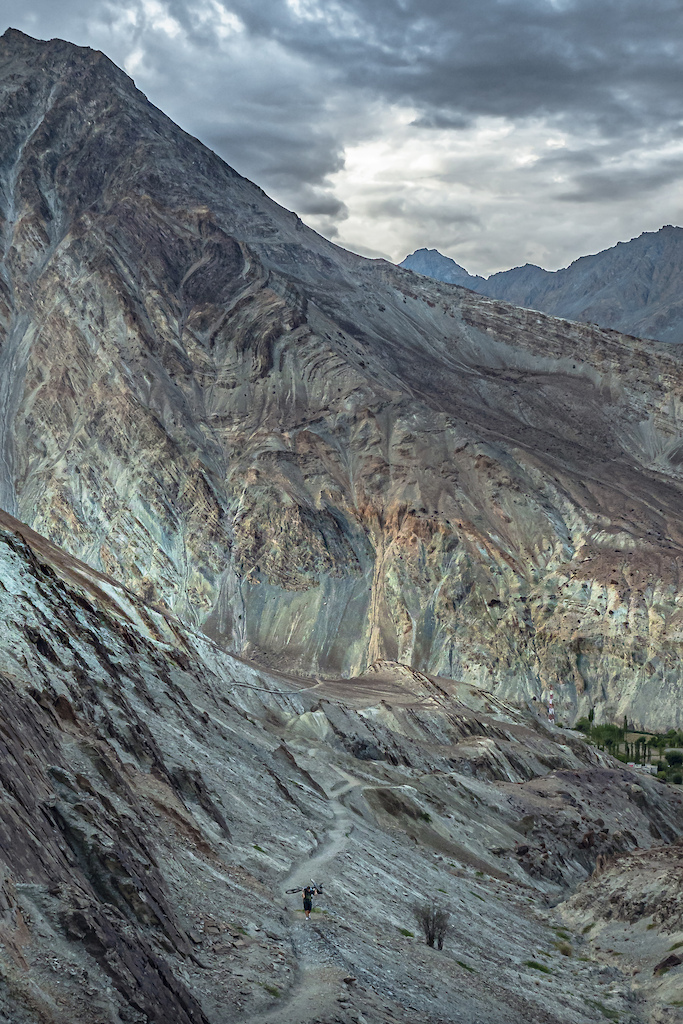

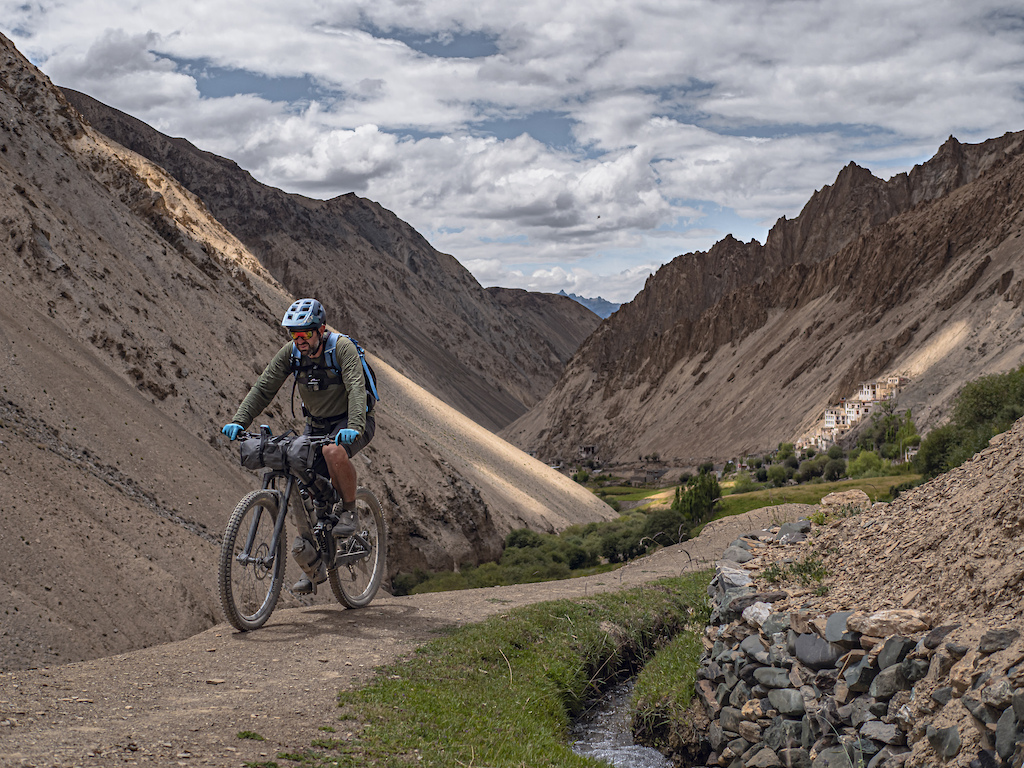
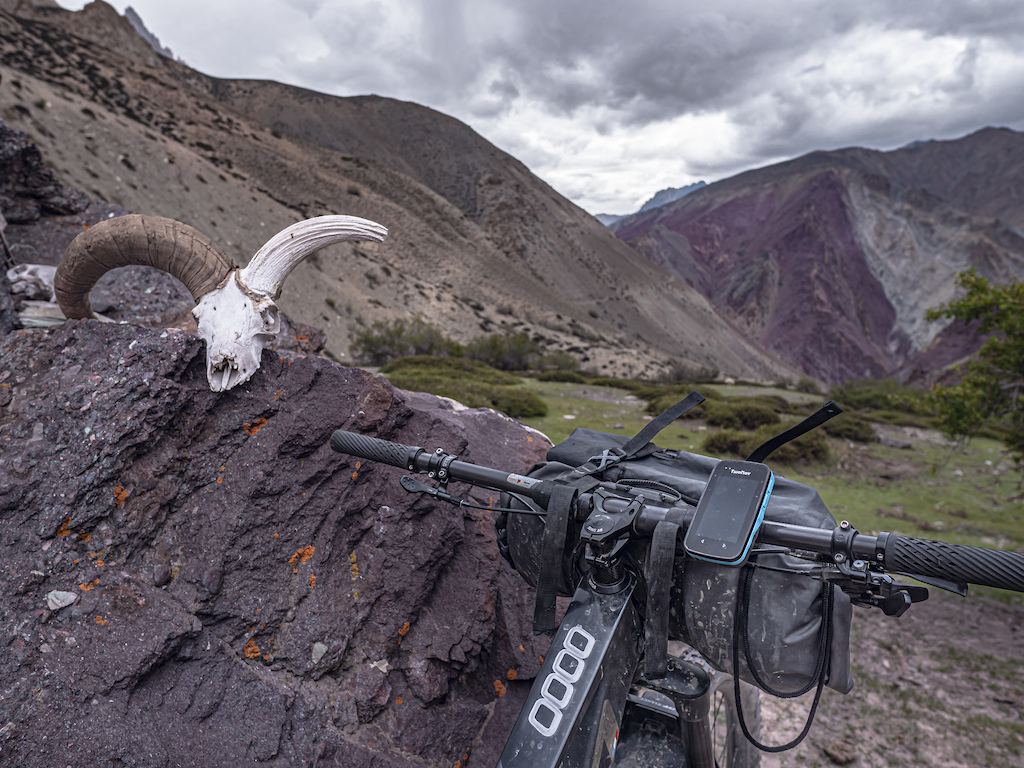
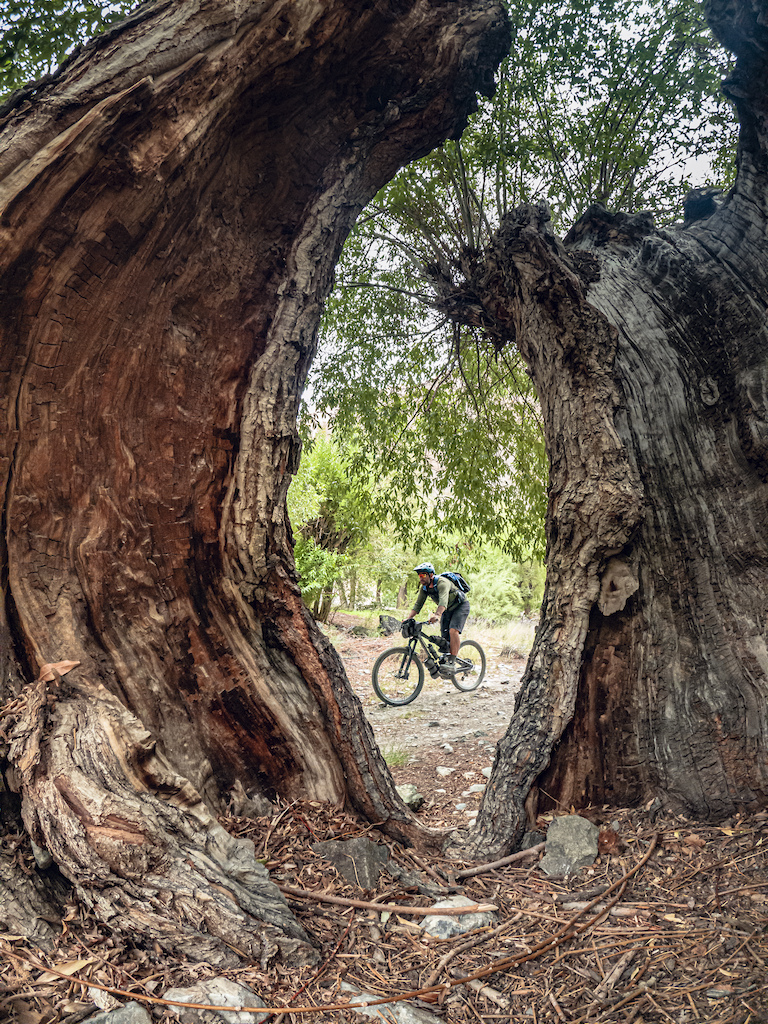
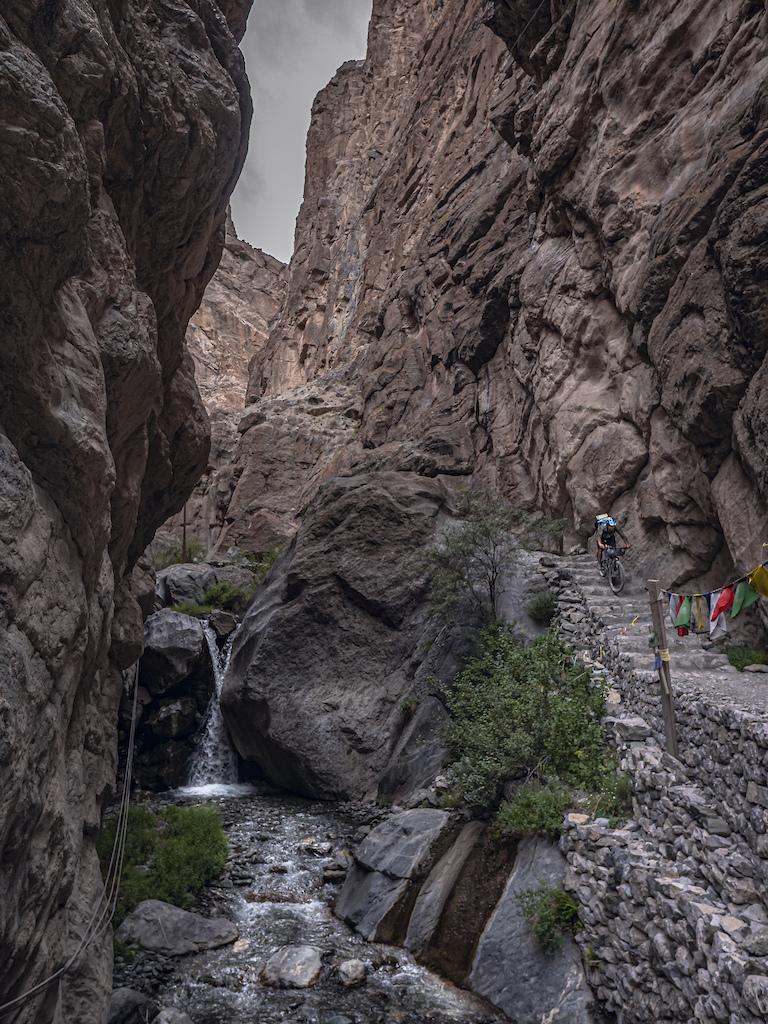


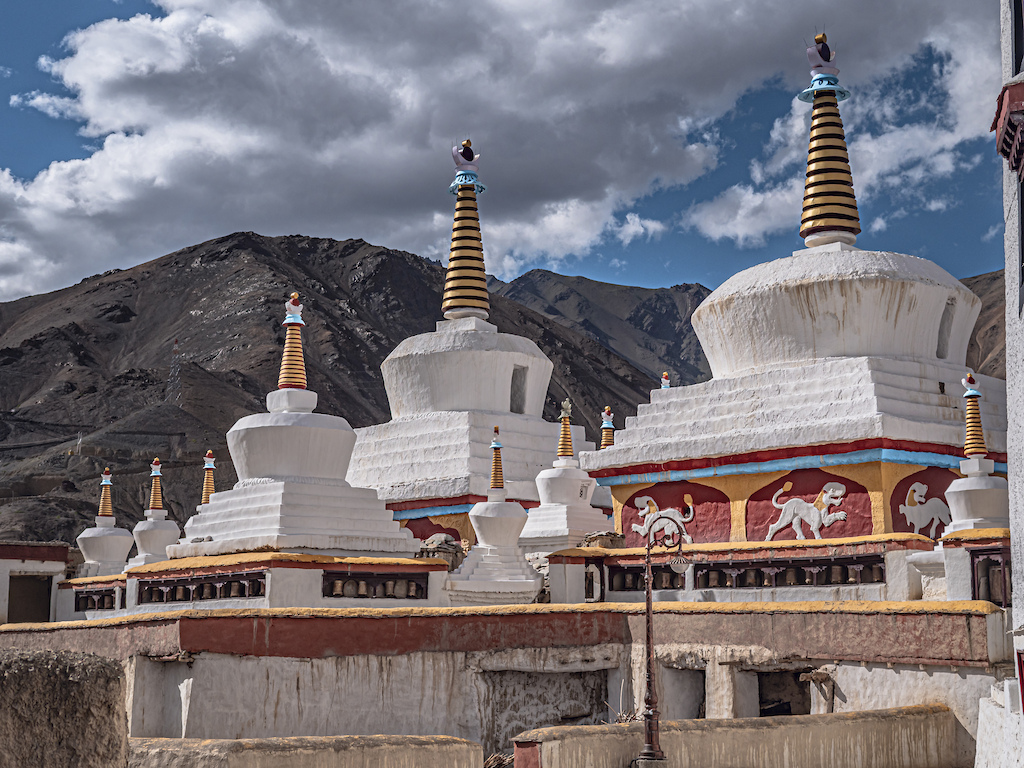

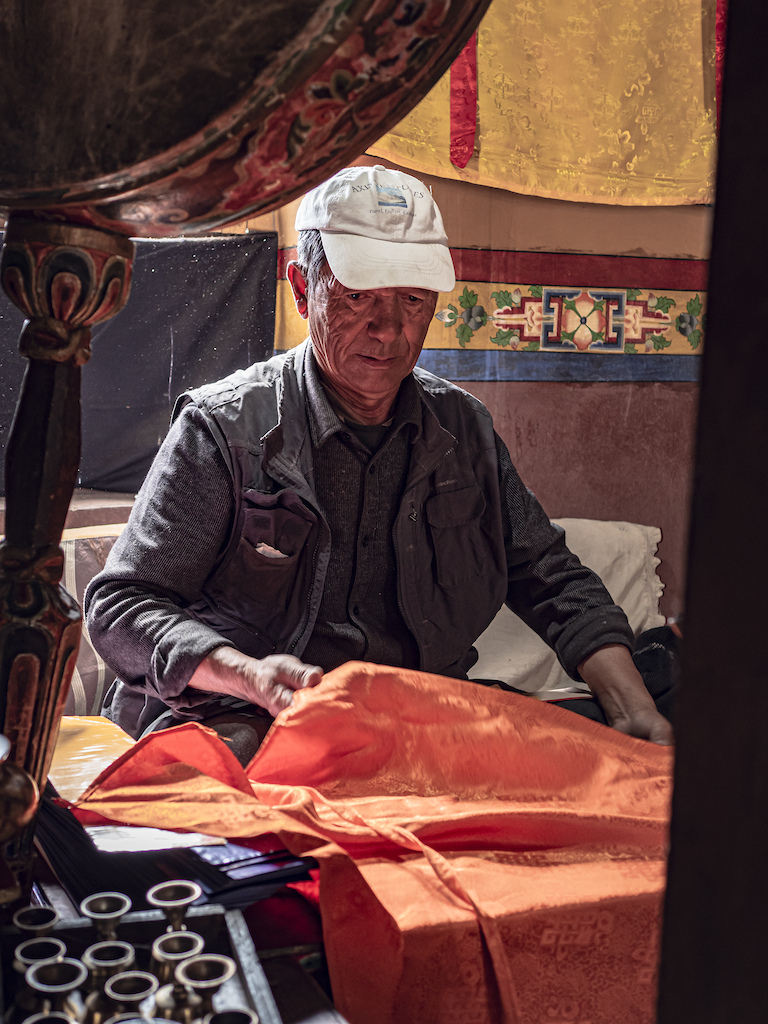

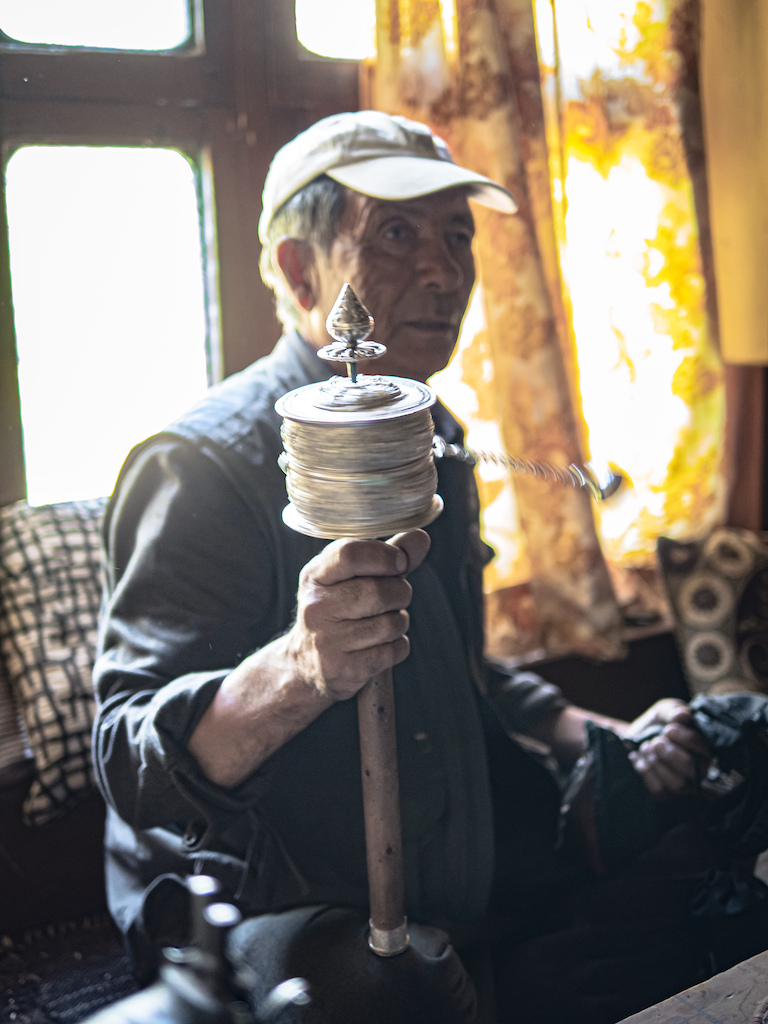
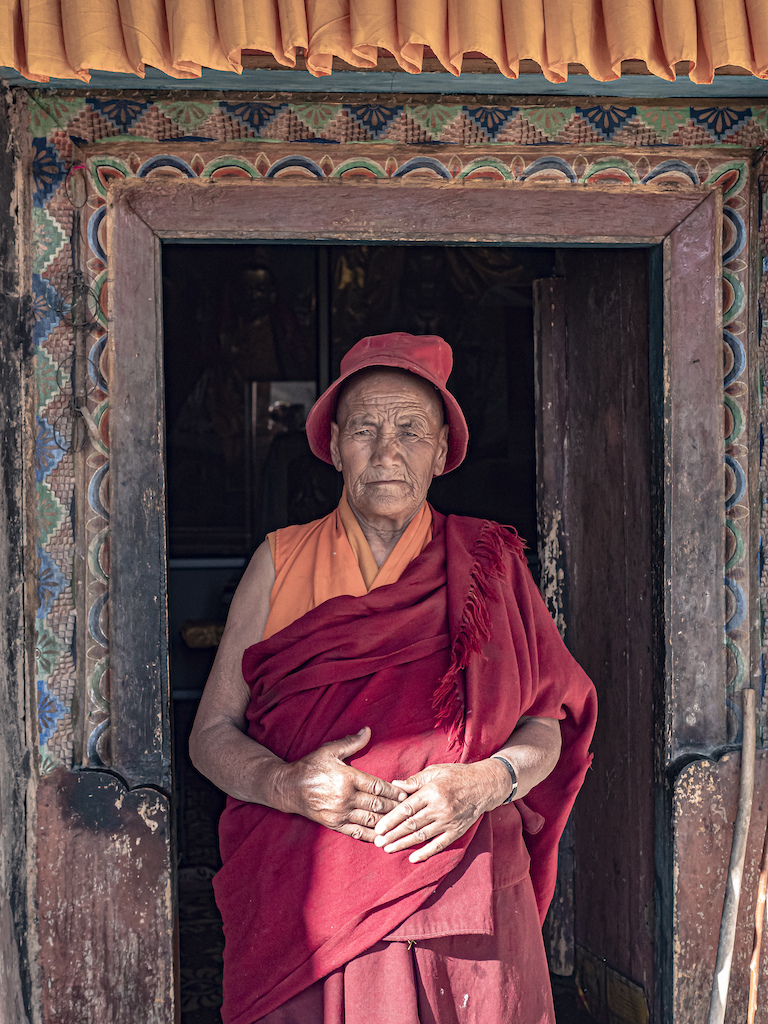
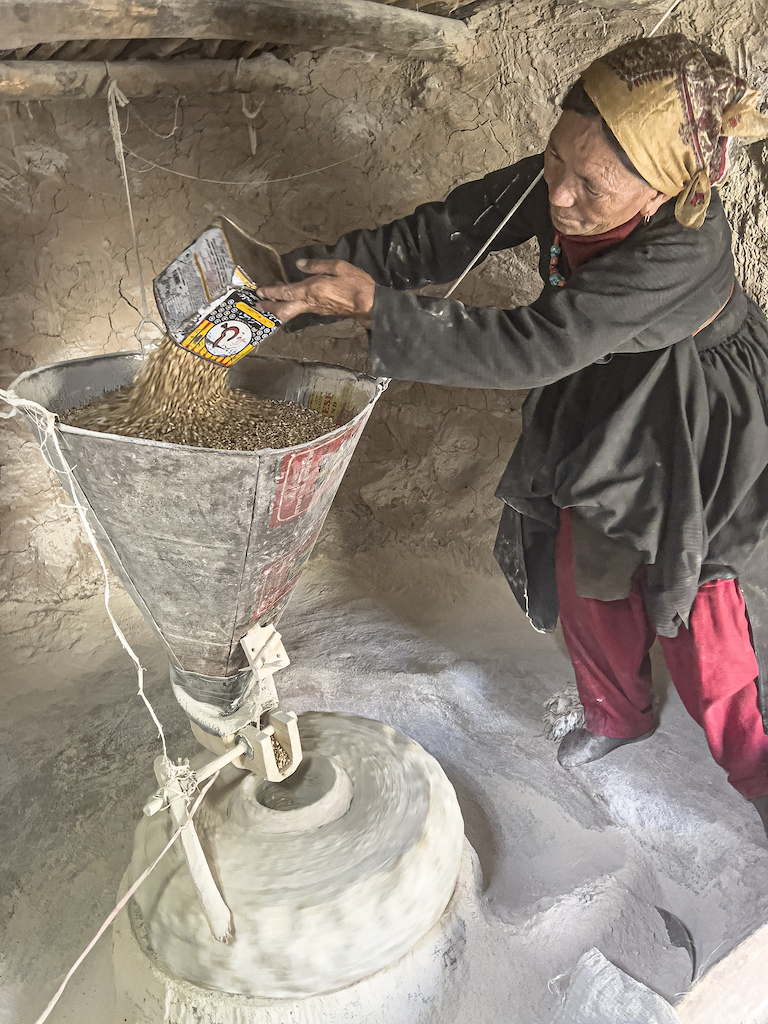
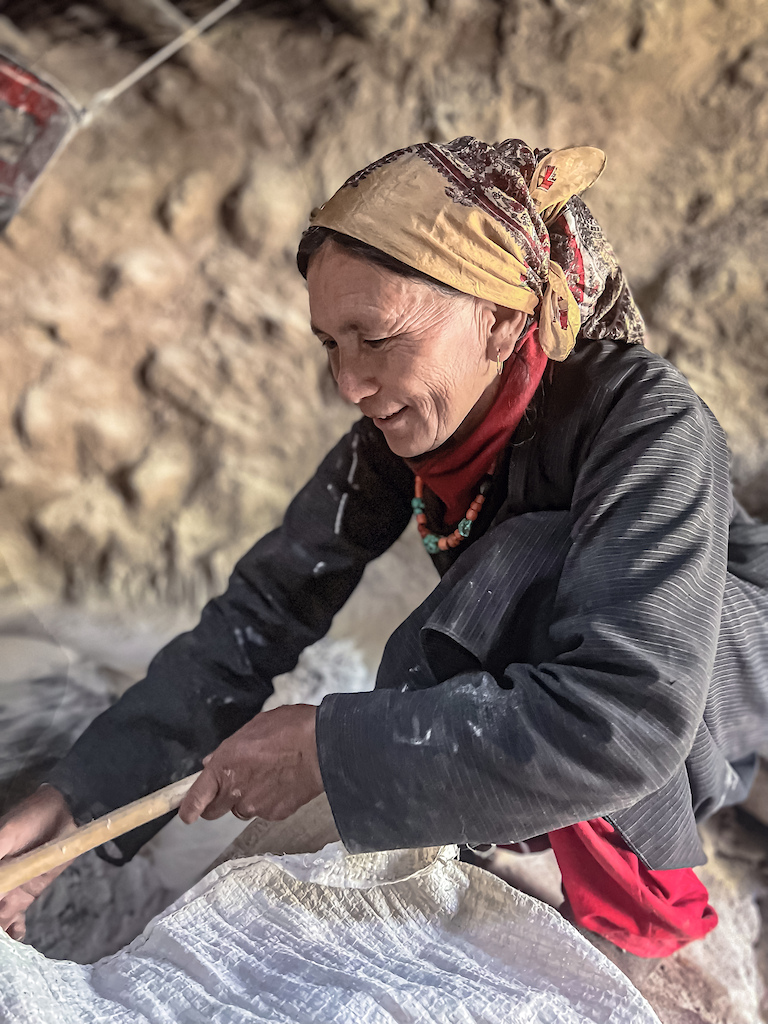
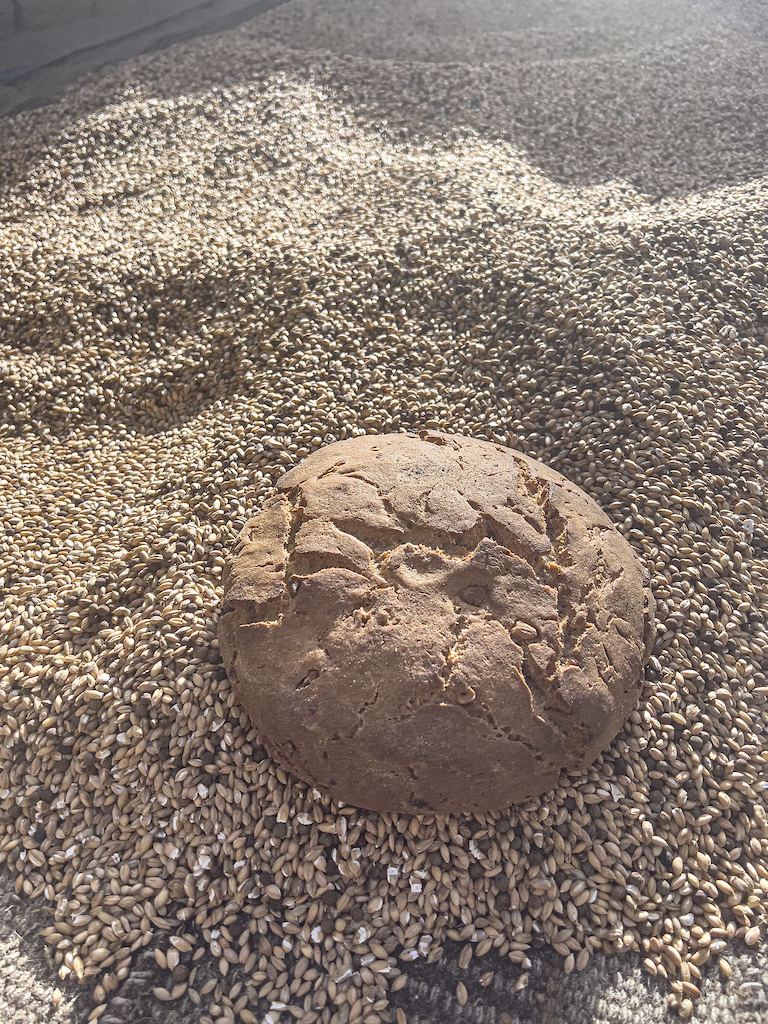





Kit question if anyone has any input? What shoes/pedals are you running for a trip like this?
I've never done anything like this but even on multi day rides on unknown terrain, I default to flats for the shoes as its so much easier for the hike-a-bike unexpected unrideable bits.
I use clipless pedals with appropriate shoes to walk. Because in that king of trip, you walk very often, specially during the climbs. For me, it's not a problem, i can walk hours with.